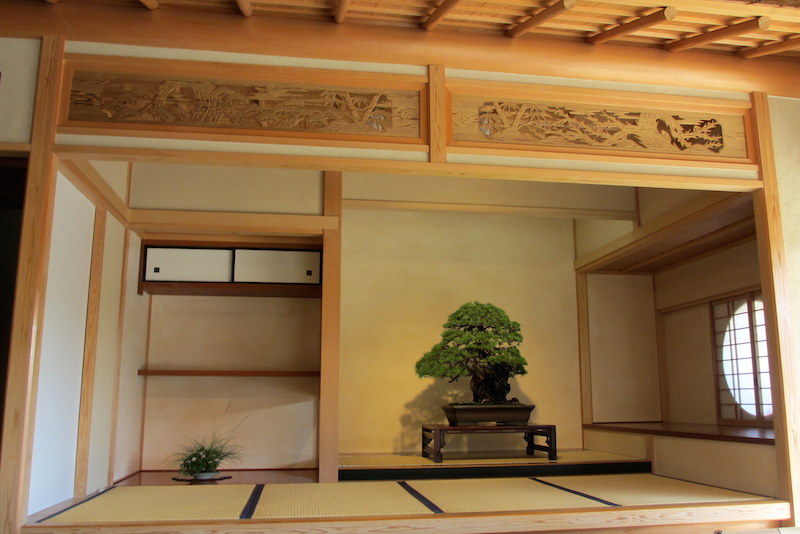A Tokonoma is a dedicated space in a Japanese style reception room, in which items are on display for artistic appreciation. Often this includes a Bonsai tree, a Suiseki (viewing stone), a scroll and an accent plant.
Styles of Bonsai tokonoma
Shin, Gyo and So are the three traditional styles of Tokonoma originating in Chinese calligraphy. The Shin style is very strict and formal, whereas the So style is free. The Gyo style lies between these two. The amount of formality can be seen by looking at the Tokobashira (supporting pillar); the more refined the wood, the more formal the Tokonoma display.
The “So” style Tokonoma
The So styled room is often used as a tea room. Variety is central in the design, using several kinds of wood for the pillars and beams. Bonsai trees that fit this design best include the Bunjingi style (Literati), accompanied with an accent plant or a viewing stone (Suiseki).


The “Gyo” style Tokonoma
Most reception rooms in modern times are created in the Gyo style. Bonsai trees with “s” shaped trunks (in Japanese: “Moyogi”) or flowering Bonsai (in Japanese: “Hanamono”) fit this style Tokonoma best.


The “Shin” style Tokonoma
The Shin style is the most formal and prestigious of the three styles. The arrangements are or prescribed and formalized; the tokonoma needs a tatami mat with a koraiberi (decorated binding of the mat), where persons of high-class are seated. Various items are on display, including a Suiseki (viewing stone), incense tools and a bonsai; the Bonsai should be an elegant piece that fits the grandeur of the surroundings.


A few examples of Tokonoma displays and Bonsai





